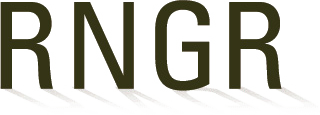
Astragalus (arrectus)
|
Dave Skinner PMC Farm Manager USDA NRCS - Pullman Plant Materials Center Room 211A Hulbert Hall WSU Pullman, Washington 99164-6211 509-335-9689 509-335-2940 (fax) abbie@wsu.edu http://plant-materials.nrcs.usda.gov/wapmc |
|
| Family Scientific Name: | Fabaceae | ||
|---|---|---|---|
| Family Common Name: | Legume | ||
| Scientific Name: | Astragalus arrectus Gray | ||
| Common Synonym: | Astragalus palousensis Piper | ||
| Common Name: | Palouse milkvetch | ||
| Species Code: | ASAR7 | ||
| General Distribution: | Endemic to eastern Washington, particularily Whitman County, and adjacent parts of Idaho from sagebrush to open Ponderosa pine forest. | ||
| Propagation Goal: | plants | ||
| Propagation Method: | seed | ||
| ProductType: | Container (plug) | ||
| Time To Grow: | 4 Months | ||
| Target Specifications: | Tight root plug in container. | ||
| Propagule Collection: | Fruit is a pod containing several seeds. Seed is collected in late July or early August when the pods begin to split open and the seed is hard and brown. The pods do not forcefully dehisce, so timing is not as critical as with lupines, but seed will shatter and must be collected ina timely manner. | ||
| Propagule Processing: | Small amounts are crushed by hand to free the seed, then cleaned with an air column separator. Larger amounts could be threshed with a hammermill, then cleaned with air screen equipment. Seed is less brittle than that of lupines and less likely to be damaged by mechanical threshing | ||
| Pre-Planting Treatments: | The seed coat restricts water uptake and germination is increased by scarification. Unpublished data from trials at the Pullman PMC showed 58% germination from untreated seed. Seed scarified in hot water germinated at 78%. Seed scarified by rubbing between two pieces of sandpaper attained 93% germination. | ||
| Growing Area Preparation/ Annual Practices for Perennial Crops: |
Seed should be inoculated with the proper Rhizobium species prior to planting. In January scarified seed is sown in the greenhouse in 10 cu. in. Ray Leach Super cell conetainers filled with Sunshine #4 and covered lightly. Head space of ¬ to « inch is maintained in conetainers to allow deep watering. A thin layer of pea gravel is applied to prevent seeds from floating. Conetainers are watered deeply. | ||
| Establishment Phase: | Medium is kept moist until germination occurs. A few scarified seeds will germinate within 7-8 days but the bulk of the germination does not occur for 2-3 weeks. A few seeds will germinate a month or more after planting. No germination in unscarified seed occurred before 2 weeks had elapsed and total germination was lower. | ||
| Length of Establishment Phase: | 3 weeks | ||
| Active Growth Phase: | Plants are watered deeply every other day and fertilized once per week with a complete, water soluble fertilizer containing micro-nutrients. | ||
| Length of Active Growth Phase: | 3 months | ||
| Hardening Phase: | Plants are moved to the cold frame in April, depending on weather conditions. They are watered every other day if the weather is cool, and every day during hot, dry spells. | ||
| Length of Hardening Phase: | 2 weeks | ||
| References: |
Hitchcock, C. Leo, and Arthur Cronquist. 1973. Flora of the Pacific Northwest. University of Washington Press. Seattle, WA. Kruckeberg, Arthur R. 1996. Gardening with Native Plants of the Pacific Northwest. 2nd ed. University of Washington Press. Seattle, WA. St. John, Harold. 1963. Flora of Southeastern Washington and of Adjacent Idaho. 3rd edition. Outdoor Pictures. Escondido, CA. USDA, NRCS. 2004. The PLANTS Database, Version 3.5 (http://plants.usda.gov). National Plant Data Center, Baton Rouge, LA 70874-4490 USA. Young, James A. and Cheryl G. Young. 1986. Collecting, Processing and Germinating Seeds of Wildland Plants. Timber Press. Portland, OR. |
||
Citation:
Skinner, David M,. 2005. Propagation protocol for production of Container (plug) Astragalus arrectus Gray plants USDA NRCS - Pullman Plant Materials Center Pullman, Washington. In: Native Plant Network. URL: https://NativePlantNetwork.org (accessed 2025/10/16). US Department of Agriculture, Forest Service, National Center for Reforestation, Nurseries, and Genetic Resources.



